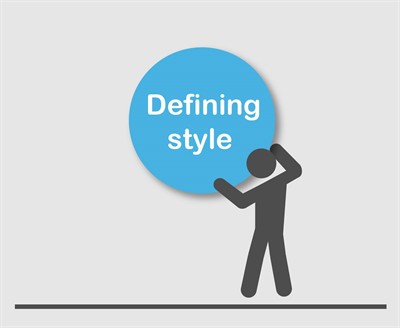Content Strategy and UX – Part 1
A content strategy is a cornerstone of your company’s inbound marketing effort. It is the plan for creating and presenting your content in a meaningful, useful and relevant context to optimize user experience (UX). Customers are hungry for information relevant to them and their needs.
Effectively preparing and executing a content strategy enables you to deliver the right information at the appropriate time and place for your audience. This blog will focus on the three building blocks of great content: voice, tone and style.

Finding your Voice
We all have a voice. It may change slightly, but usually, each of our voices is recognizable. Your website and content also have a voice. The voice can vary depending on the context of the content, but generally, your brand’s voice should be consistent and recognizable.
The voice is an expression of the brand it represents. How you define your brand will determine your voice. According to Patrick Nichols you can identify a website’s voice by pinpointing the keywords and phrases used.
For example, Globalization Partners International (GPI) has keywords and phrases like “translation services”, “latest blog entries”, “who we work with” and “who we are” listed on the website’s homepage. This shows GPI’s commitment to our translation services, but it also expresses our desire to create compelling and informative content and connect with our visitors by showing who we are. The voice is professional, competitive, innovative and engaging.
An effective content strategy will define your brand’s voice and help you create content to support it.
Shaping your Tone

Voice expresses your brand and is typically recognizable across all content, but the tone reflects the intent and can vary depending on the context. Nichols states that audience profile, subject matter and desired outcomes are the three main considerations associated with tone.
Audience profiles are your personas. An important part of your content strategy is determining who you are creating content for. Identify your customers’ demographics. Age, education level, income, location and language spoken are some of the factors used for defining your audience. When you know who you are producing content for, you will know what type of content to create and the tone to use.
Subject matter and desired outcome go hand-in-hand. The subject matter is dependent on the message you want to convey and the outcome you desire. The tone used will reflect these two factors.
For example, the tone for GPI’s contact page is not the same as the translation portals and tools page. The contact page is intended to provide the location and contact information of GPI’s headquarters and global offices. The subject matter is basic and straightforward, and the desired outcome is purely informative. But the content on the translation portals and tools page is intended to create interest in our globalization tools, connectors and portals. The subject matter is intriguing and impressive, and the desired outcome is to have visitors take action by contacting GPI to demo our portal and connectors and ultimately select GPI for their translation and localization projects.
Identifying your audience, subject matter and desired outcome will help you shape the appropriate tone for each piece of content.
Defining your Style

Style is comprised of a combination of voice and tone. As you find your voice and shape your tone you are building your style.
Decide what defines your brand and make a list of attributes and characteristics. This will become your content voice.
Describe your personas which will become the audience for your content. Choose your subject matter to clearly communicate your message and what outcomes you hope will result from the content. These three pieces will determine your tone.
Once you identify the voice of your brand and tone of your content, you will be able to create a style guide for your content strategy.
Summary
Content is a critical component of UX. People are bombarded with content daily, so you must create a strategy that makes your brand’s content stand out from the crowd. Considerations like target audience, your message and your goals will help you craft that strategy. Engage with your customers and discover what information they are looking for, then deliver it. Users will remember their positive UX when dealing with your company and they will look to your brand as a source of thought leadership.
Resources for Multilingual Websites and Content
You may gain further insight into multilingual websites considerations, multilingual SEO and related topics by reviewing previous blogs written by GPI:
